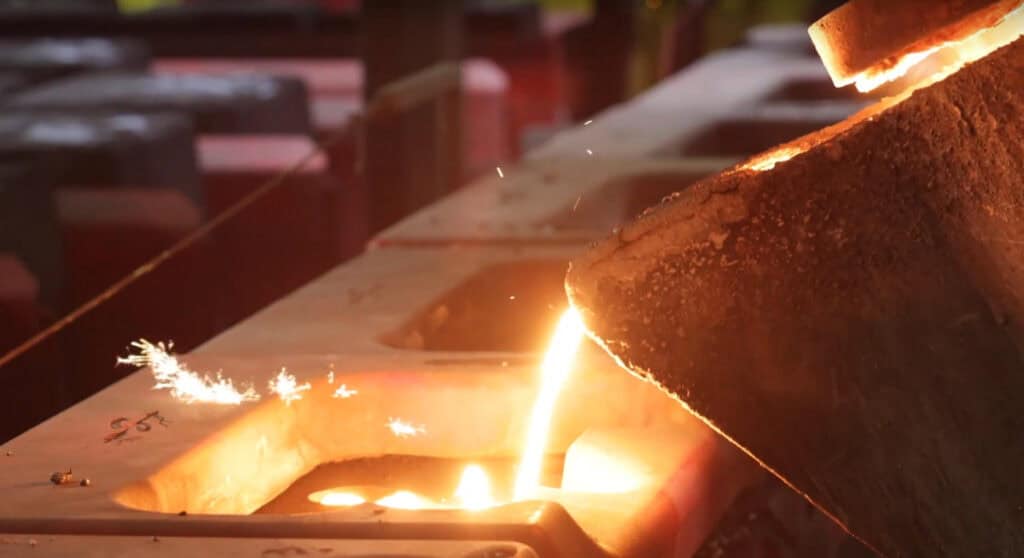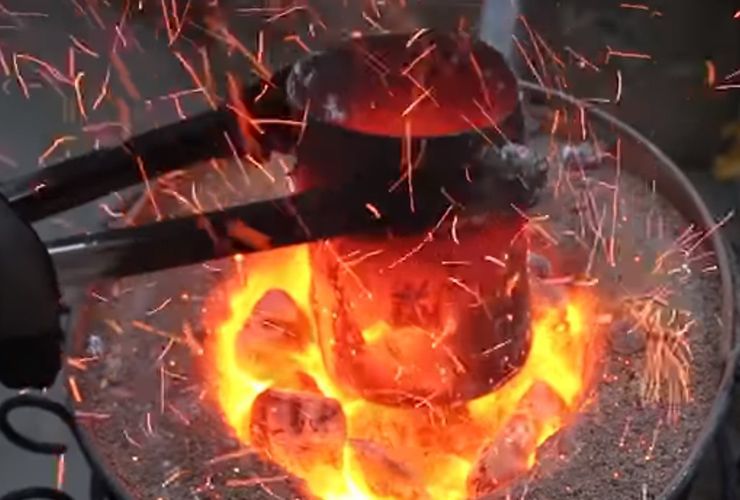Five important facts you didn’t know about Metal Foundry processes
Wiki Article
Discover the Innovative Strategies Utilized in a Metal Foundry for Superior Casting Outcomes
In today's affordable production landscape, metal foundries are increasingly adopting ingenious strategies to improve casting results - Aluminum Foundry. Advanced computer simulations allow for precise modeling of liquified metal habits, while 3D printing allows fast production of intricate mold and mildews. In addition, green products and automation enhance procedures. These developments guarantee substantial enhancements in efficiency and high quality control. However, the influence of these technologies on sustainability and manufacturing techniques continues to be to be completely exploredAdvanced Computer System Simulations in Metal Casting
Advanced computer system simulations have actually transformed the metal spreading process by boosting accuracy and effectiveness. These advanced tools enable designers to create virtual models of cast elements, allowing them to examine and predict the habits of liquified metal during the spreading stage. By replicating various specifications such as temperature, circulation rate, and cooling rates, suppliers can determine possible issues prior to physical manufacturing starts.This aggressive strategy lowers waste and decreases pricey mistakes, ultimately causing improved product quality. Furthermore, simulations assist in the optimization of mold layouts, ensuring that they satisfy the certain needs of each task. The assimilation of computational liquid characteristics (CFD) and limited aspect analysis (FEA) further adds to the precision of these simulations, providing understandings that were formerly unattainable. Because of this, progressed computer system simulations have actually become an important part of modern metal foundries, substantially advancing the market's abilities.
3D Printing for Mold And Mildews and Patterns
3D printing has arised as a groundbreaking strategy for creating molds and patterns in the metal foundry market. This modern technology enables the fast manufacturing of intricate geometries that conventional production approaches battle to achieve. By utilizing additive production, foundries can develop elaborate designs with reduced lead times and material waste. The capability to generate mold and mildews on need permits greater flexibility in design models, promoting faster prototyping and alterations.Moreover, 3D printing can make use of a range of materials, including steels and plastics, tailored to certain casting demands. This flexibility improves the accuracy of mold and mildews, causing premium spreading results with enhanced surface coatings. Additionally, the decrease in the variety of components called for simplifies assembly procedures, even more enhancing manufacturing effectiveness. As foundries continue to embrace 3D printing, they are positioned to redefine market criteria, leading the way for advancement and enhanced efficiency in metal spreading operations.
Eco-Friendly Materials and Processes
As the metal foundry market deals with increasing pressure to lower its environmental impact, the fostering of environmentally friendly products and procedures has come to be vital. Shops are now discovering sustainable options to traditional materials, such as using bio-based binders and recycled metals. These products not only decrease waste however likewise lower power consumption during production.Furthermore, improvements in sand casting techniques have actually led to using synthetic sands that are much less damaging to the atmosphere. Foundries are likewise implementing cutting-edge processes like liquified metal treatment that lowers emissions and enhances the top quality of actors products.
Water-based coverings have actually changed poisonous solvents, promoting a safer work environment. By integrating these environmentally friendly methods, metal foundries can substantially decrease their ecological effect while keeping premium spreading outcomes. This shift not only profits the environment however additionally aligns with the expanding consumer demand for sustainable manufacturing remedies
Automation and Robotics in Foundry Operations
While the metal foundry industry embraces development, the integration of automation and robotics is transforming operations considerably. Automated systems improve processes such as mold and mildew production, metal putting, and casting completing, greatly boosting performance. Robotics help with the handling of heavy products, decreasing the risk of office injuries and making sure safer settings.
Better, using automated directed lorries (AGVs) enhances product transport within centers, making sure timely shipment of components to suitable workstations. By applying these innovations, foundries can adapt to rising and fall needs with greater dexterity, ultimately leading to boosted success and competitiveness in the marketplace. As automation and robotics remain to evolve, they hold the possible to redefine conventional foundry techniques and drive additional developments in casting strategies.
Real-Time Monitoring and Quality Assurance Techniques
The developments in automation and robotics have actually led the way for more advanced techniques to quality control in metal foundries. Real-time tracking systems use innovative sensing units and information analytics to track essential criteria throughout the spreading procedure. These systems constantly examine variables such as stress, temperature level, and material composition, enabling immediate detection of deviations from developed standards.Quality control strategies now include artificial intelligence algorithms that examine historical data to anticipate potential flaws prior to they take place. This aggressive strategy decreases waste and boosts general manufacturing efficiency. In addition, integrated feedback loopholes enable rapid changes, making certain that each casting meets rigid high quality needs.
The execution of digital doubles-- virtual reproductions of physical assets-- has actually also revolutionized quality control, permitting engineers to imitate and enhance processes in real-time. With each other, these ingenious techniques substantially improve the reliability and top quality of castings, setting brand-new market standards in metal foundry procedures.
Often Asked Inquiries
What Kinds of Metals Are Typically Cast in Foundries?
Frequently cast metals in foundries consist of aluminum, brass, bronze, and iron. Each metal displays unique properties, making them appropriate for various applications, such as automotive parts, machinery, and creative sculptures, enhancing their flexibility in production.
How much time Does the Casting Process Normally Take?
The casting process usually takes a number of hours to days, relying on variables such as the complexity of the mold, sort of metal utilized, and cooling demands. Each stage influences the general duration significantly.What Security Procedures Are in Location for Foundry Workers?

Exactly how Are Problems in Castings Identified and Addressed?
Issues in castings are identified via aesthetic examinations and non-destructive testing methods. As soon as found, foundry workers resolve them by refining processes, readjusting material make-ups, and executing rehabilitative actions to ensure quality and compliance with criteria.What Is the Expense Array for Metal Casting Solutions?
The price range for metal spreading services normally ranges $1 to $10 per extra pound, depending on Aluminum Foundry variables such as material kind, complexity of the style, and manufacturing volume, affecting total pricing substantially.In today's competitive production landscape, metal foundries are increasingly embracing cutting-edge techniques to improve spreading results. As the metal foundry industry deals with raising pressure to minimize its environmental impact, the fostering of eco-friendly products and procedures has come to be vital. Foundries are now discovering sustainable choices to traditional materials, such as using bio-based binders and recycled steels. By integrating these environmentally friendly techniques, metal foundries can considerably reduce their eco-friendly effect while keeping high-quality casting results. The improvements in automation and robotics have actually led the means for extra innovative approaches to quality assurance in metal foundries.
Report this wiki page